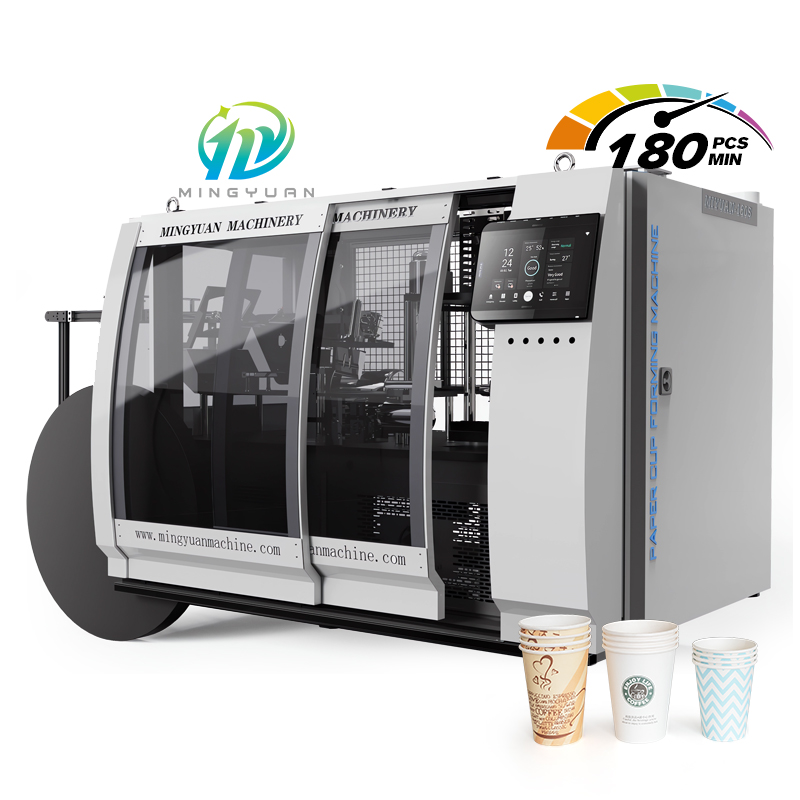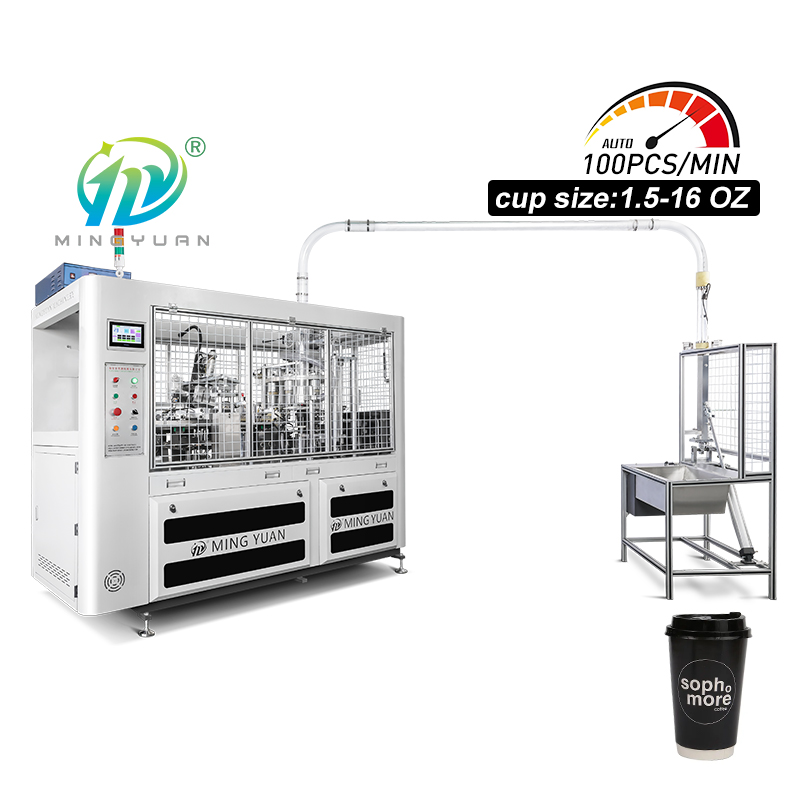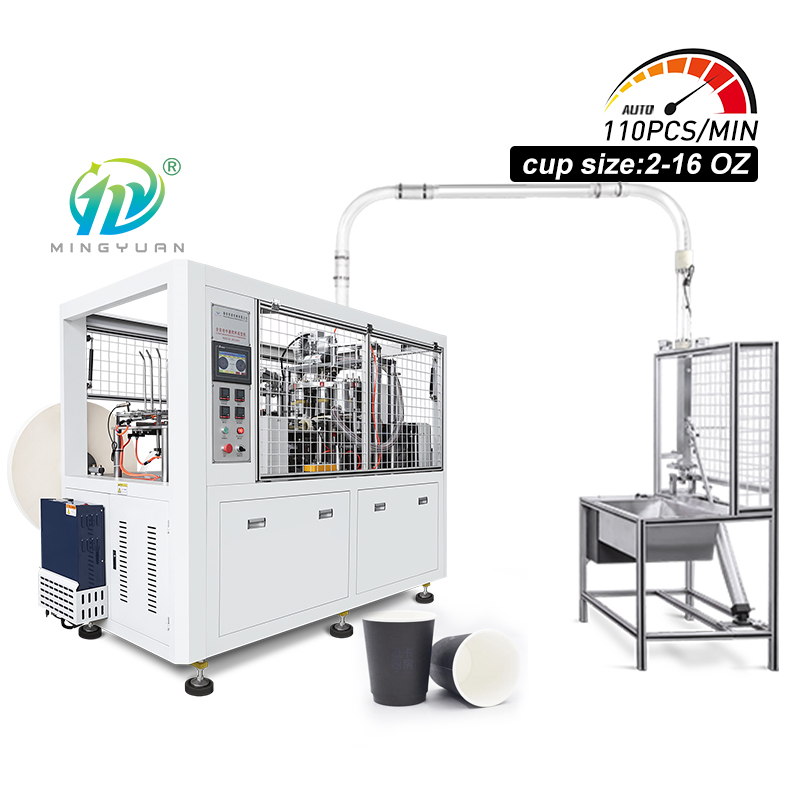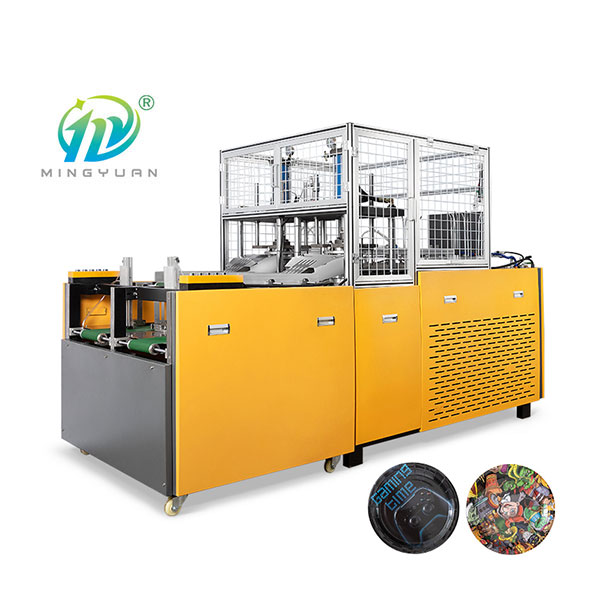This high-speed paper cup machine buying guide will help you:
● Understand what is a high-speed paper cup machine
● Understand the important features of Paper Cup Forming Machine
● Understand the working principle of Automatic paper cup machine
● Learn the key questions to ask when choosing a high-speed paper cup machine
● Find the right high-speed paper cup machine for your application
Understand what is a high-speed paper cup machine
A high-speed paper cup machine is a type of machinery used in the manufacturing of paper cups. It is designed to produce a large number of paper cups in a short period of time, hence the term "high-speed." These machines are typically automated and can produce cups at a rate of several thousand cups per hour. They are equipped with various mechanisms for cutting, shaping, sealing, and stacking the cups, ensuring efficient and continuous production. High-speed paper cup machines are commonly used in industries such as food and beverage packaging, where there is a high demand for disposable paper cups.
Understand the important features of Paper Cup Forming Machine
◆ High-speed operation: Paper cup forming machines are designed to operate at high speeds, producing a large number of cups in a short amount of time.
◆ Automatic operation: These machines are fully automated, requiring minimal manual intervention. They can perform tasks such as feeding paper, sealing cups, and ejecting finished products without human assistance.
◆ Versatility: Paper cup forming machines can produce cups of various sizes and shapes, depending on the requirements of the customer. They can also be adjusted to accommodate different types of paper or cardboard materials.
◆ Precision and accuracy: These machines are equipped with advanced technology to ensure precise and accurate cup forming. They have sensors and controls that monitor the process, ensuring consistent quality and dimensions of the cups.
◆ Easy maintenance: Paper cup forming machines are designed for easy maintenance and cleaning. They have accessible components and mechanisms that can be easily inspected and repaired if needed.
◆ Energy efficiency: Many modern paper cup forming machines are designed to be energy-efficient, reducing power consumption and operating costs.
◆ Safety features: These machines are equipped with safety features to protect operators and prevent accidents. These may include emergency stop buttons, safety guards, and sensors to detect any abnormalities during operation.
◆ User-friendly interface: Paper cup forming machines often have user-friendly interfaces, making it easy for operators to set up and control the machine. They may have touch screens or digital displays for convenient operation.
◆ Quality control: Some paper cup forming machines are equipped with quality control systems that inspect each cup for defects or irregularities. This ensures that only high-quality cups are produced and delivered to customers.
◆ Compact design: Many paper cup forming machines are designed to be compact and space-saving. This allows for easy installation in factories or production facilities with limited space.
Understand the working principle of Automatic paper cup machine
The working principle of an automatic paper cup machine involves several steps:
● Paper Feeding: The machine starts by feeding the paper roll into the machine. The paper roll is unwound and fed into the machine through a series of rollers.
● Printing: If required, the machine can also print designs or logos on the paper roll before cup formation. This step is optional and depends on the specific requirements of the cups.
● Cup Forming: The paper roll is then passed through a heating element, which softens the paper and makes it pliable. The paper is then cut into a specific shape and size using a die cutter. The cut paper is then transferred to the cup forming mold.
● Cup Shaping: The cup forming mold consists of a series of cylindrical molds, each with a specific shape and size. The cut paper is placed on the mold, and a mechanical or pneumatic system applies pressure to shape the paper into a cup. The bottom of the cup is also formed in this step.
● Sealing: Once the cup is formed, a sealing mechanism is used to secure the side seam of the cup. This can be done using heat or adhesive, depending on the machine's design.
● Bottom Knurling: The bottom of the cup is knurled to provide stability and prevent leakage. This step involves compressing and shaping the bottom of the cup using a knurling tool.
● Cup Ejection: After the cup is formed and sealed, it is ejected from the machine using a mechanical or pneumatic system. The cups are then collected in a tray or conveyor belt for further processing or packaging.
● Repeating the Process: The machine continues to repeat the above steps in a continuous cycle, allowing for high-speed production of paper cups.
Automatic paper cup machine uses a combination of mechanical, electrical, and pneumatic systems to feed, cut, shape, seal, and eject paper cups in a fully automated manner.
Learn the key questions to ask when choosing a high-speed paper cup machine
how much does a high speed paper cup machine cost
The cost of a high speed paper cup machine can vary depending on various factors such as the brand, model, specifications, and country of purchase. Generally, a basic paper cup machine can cost anywhere from $10,000 to $30,000. However, more advanced and high-speed machines with additional features can cost up to $100,000 or more. It is recommended to contact manufacturers or suppliers directly for accurate and up-to-date pricing information.
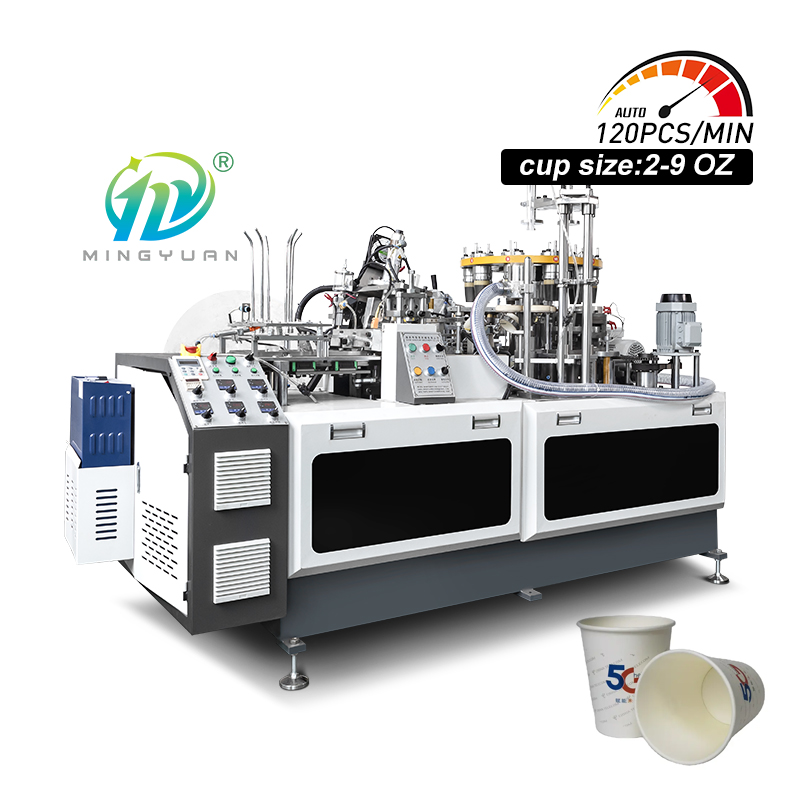
how to design a paper cup machine
Designing a paper cup machine requires a thorough understanding of the manufacturing process and the specific requirements of the cups you want to produce. Here are some general steps to guide you through the design process:
(1)Define the cup specifications: Determine the size, shape, and capacity of the cups you want to produce. Consider the materials used, such as paperboard or coated paper, and any additional features like lids or handles.
(2)Research existing machines: Study different types of paper cup machines available in the market to understand their functionalities and features. Analyze their strengths and weaknesses to identify areas for improvement or innovation.
(3)Create a conceptual design: Sketch out your initial design, considering the machine's overall structure, components, and mechanisms required for cup production. Focus on key elements like cup forming, cutting, sealing, and stacking.
(4)Develop detailed drawings: Use computer-aided design (CAD) software to create detailed drawings of each component and assembly. Ensure that all parts are correctly dimensioned and fit together seamlessly.
(5)Select materials and components: Choose appropriate materials for each component, considering factors like durability, heat resistance, and compatibility with food-grade requirements. Research and source reliable suppliers for all necessary components.
(6)Design the cup forming mechanism: Develop a mechanism that can accurately shape the paper into cups. Consider factors like speed, precision, and ease of adjustment. Explore different options such as roll-fed or pre-cut paper, and determine the best method for your cups.
(7)Incorporate heating and sealing mechanisms: Integrate a heating system to seal the cups securely. Research and select appropriate heating elements, such as hot air or ultrasonic sealing, depending on the chosen material.
(8)Include control systems: Design an electrical control system to automate the machine's operation. Incorporate sensors, actuators, and a programmable logic controller (PLC) to monitor and control the various processes involved in cup production.
(9)Test and iterate: Build a prototype of your machine and conduct thorough testing to identify any design flaws or areas for improvement. Make necessary modifications to enhance performance, reliability, and efficiency.
(10)Ensure safety and compliance: Ensure that your machine meets all safety standards and regulations. Consider safety features like emergency stop buttons, protective covers, and interlocking mechanisms to prevent accidents.
(11)Document and finalize the design: Create a comprehensive design documentation package that includes assembly instructions, bill of materials, and maintenance guidelines. Review the design with experts and make any final adjustments before proceeding to manufacturing.
Remember, designing a paper cup machine requires expertise in mechanical engineering, automation, and manufacturing processes. It is advisable to consult with professionals or partner with experienced manufacturers to ensure a successful design and implementation.

Find the right high-speed paper cup machine for your application
Finding the right high-speed paper cup machine can be a daunting task, but with some research and consideration of your specific needs, you can find the perfect machine for your business. Here are some steps to help you in your search:
★ Determine your production requirements: Start by assessing your production needs. Consider factors such as the expected daily output, cup sizes, and any specific features or customization options you require. This will help you narrow down your options and find a machine that meets your exact requirements.
★ Research reputable manufacturers: Look for manufacturers or suppliers that have a good reputation in the industry. Read customer reviews, check their track record, and ensure they have a history of producing reliable and high-quality machines. This will help you avoid any potential issues or disappointments in the future.
★ Consider the machine's speed and efficiency: High-speed machines are designed to produce a large number of cups per minute. Look for machines that offer the desired speed and efficiency to meet your production targets. Consider the machine's cycle time, capacity, and overall performance to ensure it can handle your production demands.
★ Evaluate the machine's durability and reliability: A high-speed paper cup machine should be built to last and withstand continuous operation. Look for machines made from high-quality materials and with robust construction. Check if the machine has a good warranty or after-sales support to address any potential issues that may arise.
★ Assess the machine's ease of use and maintenance: Consider the machine's user-friendliness and ease of operation. Look for features such as touchscreen controls, automatic lubrication systems, or self-diagnostic capabilities that can simplify the machine's operation and reduce maintenance requirements. A machine that is easy to use and maintain will save you time and effort in the long run.
★ Compare prices and consider your budget: Compare prices from different manufacturers or suppliers to get an idea of the market range for high-speed paper cup machines. Consider your budget and balance it with the machine's features, quality, and performance. Keep in mind that investing in a reliable and efficient machine may be more cost-effective in the long term, even if it requires a higher upfront investment.
★ Request demonstrations or samples: If possible, request demonstrations or samples from the manufacturers to see the machine in action or assess the quality of the cups produced. This will give you a better understanding of the machine's capabilities and help you make an informed decision.
★ Seek recommendations or consult experts: Reach out to industry professionals, colleagues, or experts who have experience with high-speed paper cup machines. They can provide valuable insights, recommendations, or advice based on their firsthand experience.

